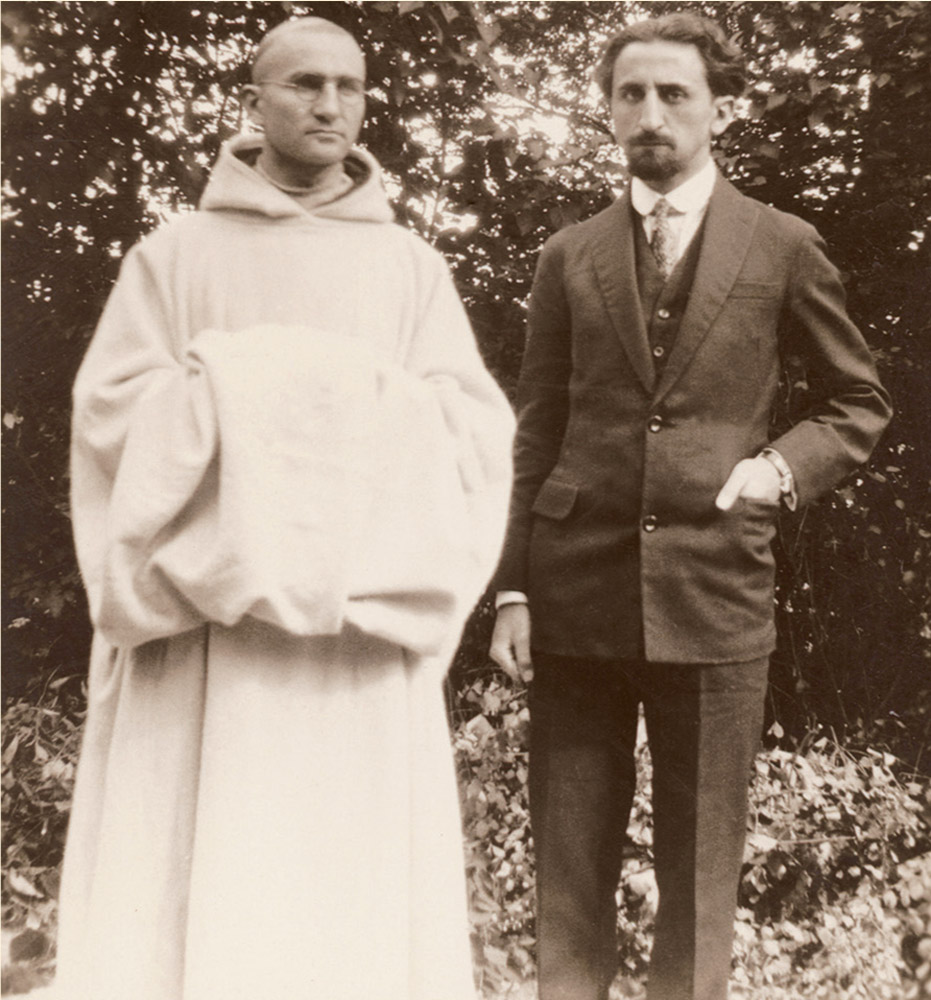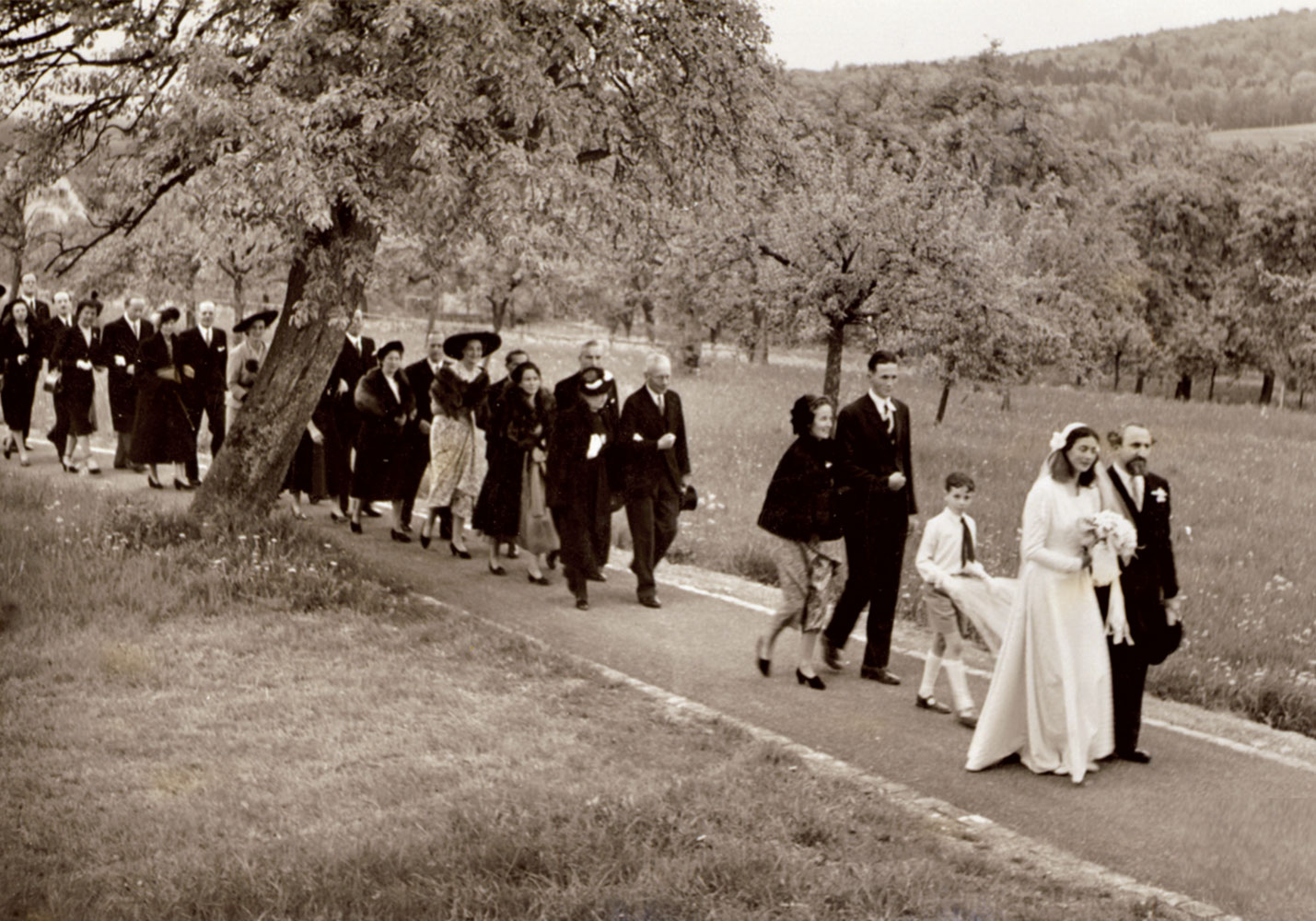
Frithjof Schuon Archive

Photo Gallery
 Frithjof Schuon in 1912 (5 years old)
Frithjof Schuon in 1912 (5 years old) Frithjof Schuon in 1916
Frithjof Schuon in 1916 Frithjof Schuon around 1917
Frithjof Schuon around 1917 The young Frithjof Schuon (far left) with his father, mother, and older brother in Basel in 1917
The young Frithjof Schuon (far left) with his father, mother, and older brother in Basel in 1917 Frithjof Schuon around 1920
Frithjof Schuon around 1920 Frithjof Schuon in 1920
Frithjof Schuon in 1920 Frithjof Schuon with his mother (Margarete), and his brother (Erich), 1923
Frithjof Schuon with his mother (Margarete), and his brother (Erich), 1923 Schuon with his maternal grandmother, around 1924
Schuon with his maternal grandmother, around 1924 Frithjof Schuon around 1929
Frithjof Schuon around 1929 Schuon in Paris, 1929
Schuon in Paris, 1929 Frithjof Schuon in Paris around 1931
Frithjof Schuon in Paris around 1931 Frithjof Schuon with Father Gall (Erich Schuon) at the Abbey of Notre-Dame de Scourmont, Belgium, 1932
Frithjof Schuon with Father Gall (Erich Schuon) at the Abbey of Notre-Dame de Scourmont, Belgium, 1932 Frithjof Schuon in 1935
Frithjof Schuon in 1935 Schuon at the pyramids, Cairo, 1938
Schuon at the pyramids, Cairo, 1938 Frithjof Schuon with René Guénon in Cairo, 1938
Frithjof Schuon with René Guénon in Cairo, 1938 Frithjof Schuon on board the ship to India, via Africa, 1939
Frithjof Schuon on board the ship to India, via Africa, 1939 Frithjof Schuon with Father Gall (Erich Schuon) in French army uniform, 1939
Frithjof Schuon with Father Gall (Erich Schuon) in French army uniform, 1939 Schuon in Lausanne, 1941
Schuon in Lausanne, 1941 The Schuon bridal procession, 1949
The Schuon bridal procession, 1949 The Schuons’ home, near Lausanne
The Schuons’ home, near Lausanne Schuon’s combined bedroom and prayer room, Lausanne
Schuon’s combined bedroom and prayer room, Lausanne Catherine Schuon, Susie Yellowtail, Thomas Yellowtail, and Frithjof Schuon, Switzerland, 1953
Catherine Schuon, Susie Yellowtail, Thomas Yellowtail, and Frithjof Schuon, Switzerland, 1953 Schuon with his cat, Tigerli—the “little tiger”, 1956
Schuon with his cat, Tigerli—the “little tiger”, 1956 Schuon with Chief James Red Cloud, 1959
Schuon with Chief James Red Cloud, 1959 Frithjof Schuon in the Swiss Alps in the 1960s
Frithjof Schuon in the Swiss Alps in the 1960s Jackson One Feather, Ben Black Elk, and Schuon, 1963
Jackson One Feather, Ben Black Elk, and Schuon, 1963 Barbara Perry, Frithjof Schuon, Catherine Schuon, and Whitall Perry
Barbara Perry, Frithjof Schuon, Catherine Schuon, and Whitall Perry Frithjof Schuon at the Matterhorn
Frithjof Schuon at the Matterhorn The chalet at Verbier used by the Schuons
The chalet at Verbier used by the Schuons Frithjof Schuon, Catherine Schuon, Barbara Perry, and Whitall Perry, Lausanne, c. 1964.
Frithjof Schuon, Catherine Schuon, Barbara Perry, and Whitall Perry, Lausanne, c. 1964. Frithjof Schuon in 1964
Frithjof Schuon in 1964 Frithjof Schuon, 1965
Frithjof Schuon, 1965 Frithjof and Catherine Schuon in Venice at San Marco
Frithjof and Catherine Schuon in Venice at San Marco Frithjof Schuon in 1968
Frithjof Schuon in 1968 Frithjof Schuon at the house of the Blessed Virgin, outside Ephesus, 1968
Frithjof Schuon at the house of the Blessed Virgin, outside Ephesus, 1968 Frithjof Schuon with Titus Burckhardt in the Swiss Alps, c. 1970
Frithjof Schuon with Titus Burckhardt in the Swiss Alps, c. 1970 Frithjof Schuon in 1974
Frithjof Schuon in 1974 Frithjof Schuon
Frithjof Schuon Frithjof Schuon
Frithjof Schuon Frithjof Schuon
Frithjof Schuon Frithjof Schuon
Frithjof Schuon Frithjof Schuon with Thomas Yellowtail beside the tipi in the Schuons’ garden in Bloomington, Indiana, autumn 1983
Frithjof Schuon with Thomas Yellowtail beside the tipi in the Schuons’ garden in Bloomington, Indiana, autumn 1983 Frithjof Schuon, 1989
Frithjof Schuon, 1989 Frithjof Schuon, circa 1990
Frithjof Schuon, circa 1990 Schuon in later years in the woods near his home in Bloomington, Indiana
Schuon in later years in the woods near his home in Bloomington, Indiana Sunrise over the Schuons’ home, autumn 1981
Sunrise over the Schuons’ home, autumn 1981 Schuon at his desk in his study at home in Bloomington
Schuon at his desk in his study at home in Bloomington Frithjof Schuon in front of his home in Bloomington, around 1990
Frithjof Schuon in front of his home in Bloomington, around 1990 The entryway of the Schuons’ home, Bloomington
The entryway of the Schuons’ home, Bloomington The living room of the Schuons’ home, Bloomington
The living room of the Schuons’ home, Bloomington Schuon on his veranda, 1995
Schuon on his veranda, 1995 Frithjof Schuon at his desk, around 1995
Frithjof Schuon at his desk, around 1995
Featured Books
Leitgedanken zur Urbesinnung
Leitgedanken zur Urbesinnung is an early work by Frithjof Schuon, the internationally known and highly honored philosopher of religion.
Featured Poems
Adastra and Stella Maris: Poems by Frithjof Schuon-Ignorance
It has been taught: nothing is in the Intellect
Adastra and Stella Maris: Poems by Frithjof Schuon-Purification
Water purifies; many rites
Adastra and Stella Maris: Poems by Frithjof Schuon-Society
Thou art a man, and among men thou must live;
Featured Articles
Frithjof Schuon and the American Indian Spirit: Interview with Michael Fitzgerald
It is generally recognized that Frithjof Schuon had a special interest in the spiritual traditions of the American Indians, but only some aspects of his relationship with them are well known. The online journal Vincit Omnia Veritas, which published six issues between 2005 and 2007, interviewed Michael Fitzgerald on the subject of Schuon’s many decades of interest in, and study of, American Indian spirituality in its many dimensions. This interview, posted on the Religio Perennis website, remains one of the most in-depth explications of Schuon’s frequent focus on many aspects of American Indian traditions. Fitzgerald also gives some important historical context to the life and times of Schuon, to his American Indian contacts and friends, and to the work of Joseph Epes Brown, a scholar of Indian Studies and a friend to both Black Elk and Schuon.
Thoughts on Reading Frithjof Schuon’s Writings on Art
The ‘Preface’ by Seyyed Hossein Nasr to “Dimensions of Islam”
Dr. Seyyed Hossein Nasr uses this “Preface” to explain that Frithjof Schuon’s writings on Islam, in this book as well as in others, is noteworthy for its focus on the “integral message” of the Islamic tradition. Schuon’s analyses are, here as elsewhere, free of academic superficialities, bring to light “the most inward aspect of the Islamic message.”
